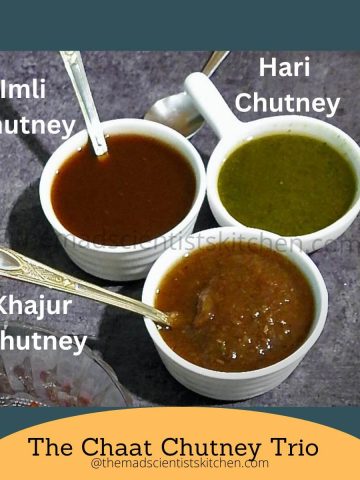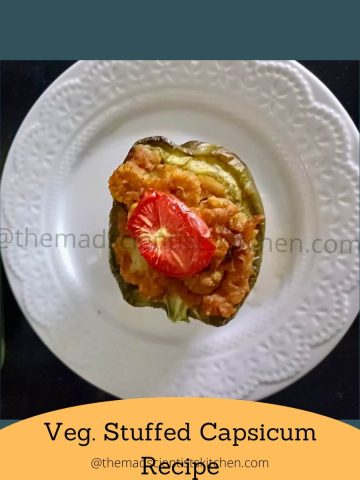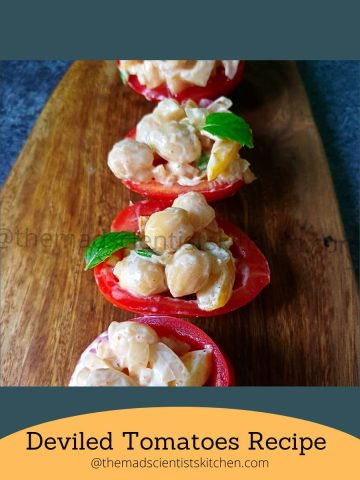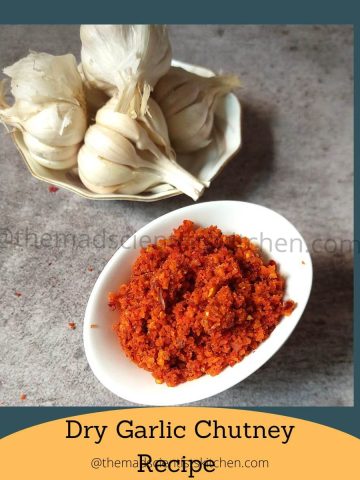A gluten-free flatbread, Rajgira Thalipeeth, is perfect for your next fasting day or vrat. These savoury, delicious flatbreads use Rajgira or Amaranth flour, boiled potatoes and roasted peanuts. Tastes best piping hot with a bowl of yoghurt or curd.

Since I cannot convince my father to give up his Ekadashi fasts, I have a suggestion for him. In Karnataka, Upma, Poha are acceptable for fasting, but he loved this Rajgira Thalileeth for his fast.
These Rajgira Thalipeeth are perfect for days like Sankashti, Mahashivratri, Ashadi Ekadashi, Navratri, Hartalika and Pournima vrat.
Jump to:
What is fasting food?
Fasting or Vrats are serious business, a common and frequent occurrence in India. When we fast, it does not mean "no food." Quite the contrary, actually - fasts entail special preparations and delicious substitutions; we avoid cereals.
So we enjoy sam ke chawal or little millets, sabudana and Rajgira. In Karnataka, we are allowed semolina and poha too.
What is Rajgira?
The name Rajgira, meaning "royal grain", is a non-cereal rich in nutrients. Also known as Amaranth, which means "deathless", it was the staple of the Aztec and was banned after the conquest of the Aztec nation.
They continued to grow as weeds. During the year 1970, however, the USA revived the grain, and it is now available as flour and an oilseed.
This grain is, however, not native to India. We do not know how these grains entered India. The versatility of Rajgira or Amarnath (and flour) is ideally suited for Indian cuisine. The grains, once puffed, can be used to make kheer or chikki. The flour, readily available in stores, can be kneaded for making puris, parathas, sheeras, and halwas.
What is Thalipeeth?
A popular flatbread made in north Karnataka and Maharashtra. We generally use a mix of millet flours to make a gluten-free and vegan meal. It is made with a blend of flours (mostly millets) and can be made entirely gluten-free. We love to use ghee or butter, but you can avoid them to make these vegan.
Unlike rotis or parathas, we do not use rolling pins, dry flour or the board.
These filling and nutritious flatbreads are not rolled but hand-shaped with your fingers.
The thalipeeth has a few holes made in it. This allows the fat to seep below between the pan and the flatbread, ensuring the centre cooks evenly. Thalipeeth are slow-cooked on a low flame till they turn lovely crisp, and the delicious aroma draws your family in to get some piping hot thalippeth into dishes.
Ingredients for Rajgira Thalileeth~ Fasting Special
- Rajgira flour: You cannot make rajgira thaleepeth without this flour. I use the readymade store-bought flour.
- Potatoes: Choose big, boiled, and grated potatoes.
- Sago: In a mixer, crush the Sago or sabudana in a dry grinder.
- Peanuts: also known as groundnuts, should be roasted and then coarsely crushed.
- Green chilli: You can use finely chopped green chillies; adjust the spice levels to suit your taste.
- Lemon juice: To add a slight tang and taste to the thalipeeth.
- Salt: You will need some to taste.
- Coriander leaves: Finely chopping them adds to the flavour.
- Ghee: Clarified butter or ghee for greasing and cooking.
- Water: I did not use any, but if the dough is dry, use some.
How to make Rajgira Thalipeeth
Making the Dough:
- If using raw peanuts, add them to a wok or kadhai and roast them on a low flame till they get small golden spots. Cool them and then peel the skin off.
- Grind the roasted peanuts in a chutney jar. Transfer to a bowl and set aside.
- In the chutney jar of your mixer, crush the Sago and the green chilli.
- Grate the boiled potato using the grater.
- In a wide mixing bowl, add the rajgira flour, the crushed sago flour and green chillies.
- Add the grated potato, lemon juice, salt, and coriander leaves. Mix well.
- Use water if you need to make soft dough.
- Make small balls and set aside covered.
Making a thalieeth:
- Grease a non-stick tava or skillet with ghee.
- Take a ball of the dough and gently pat it with your fingers into a very small circle.
- The dough loses shape or cracks. Dip your hand in water and reshape the circle.
- Drizzle ghee and Cook covered on a low flame.
- Cook till the thalipeeth turns brown on one side, then flip them over. (You will find it easier to flip when well-browned.)
- Cook till the other side turns golden brown.
- Meanwhile, make the other thalipeeth on a baking paper.
- Transfer the thalippeth to the skillet and repeat with the other balls.
- Cook with the thalipeeth.
- Serve piping hot with curds.
Substitutes for Rajgira Thalipeeth
- In place of crushed Sago, you can add sago flour that you can buy in the store.
- A boiled potato can be replaced with a cooked sweet potato mashed. However, your thalipeeth will be sweetish, or you will need to add extra green chillies to make up for the flavour.
- I use regular salt, but if your Vrat requires sandev namak or rock salt, please use it instead.
Protips for Rajgira Thalipeeth:
- I have mentioned the quantities I use to make my thalipepeth in the recipe card. Still, you can customise the whole recipe to suit your taste.
- If you add extra boiled potatoes, remember to use additional flour. This will prevent the thalipeeth from sticking to the pan.
- You can add extra peanuts, coarsely ground. It will give a lovely nutty flavour. Your shaping process will not be in any way affected.
Delicious Upwas & Festive Recipes
When it comes to Indian fasting (upwas) food or festive spreads, one thing is clear-our plates are delicious! From creamy kheer to crunchy snacks, every region has its own gems that make fasting days feel like feasting days.
Today, I am sharing a mix of traditional Maharashtrian, Goan, and North Karnataka dishes, along with pan-Indian recipes that are light on the stomach but big on flavour.
- In Goa, Chapati and Usali are commonly consumed on fasting days. A Goan-style stir fry, often made with sprouted lentils and seasonal veggies. It can be made using sweet potatoes or potatoes, keeping it light yet flavorful.
- A Goan speciality, Mangane is a festive creamy, nutty kheer made with chana dal, sabudana, and coconut milk, sweetened with jaggery. A comforting coastal flavour makes it a favorite.
- Another Goan delicacy is Kanaga che Kheer, a simple yet delicious sweet dish made with sweet potato, coconut milk, and jaggery. Tastes wonderful chilled.
- In Maharashtra, the famous uspawas recipe, sabudana khichdi, is a carb-heavy dish loaded with peanuts. It is satisfying and filling, especially when paired with a side of cool yoghurt.
- How about a cucumber salad or Khamang Kakdi on the side? Fresh, crunchy, and cooling. With roasted peanuts, coconut, and a hint of green chilli, it makes the perfect side dish.
- Sabudana Thalipeeth is a crisp pancake made using the same ingredients as sabudana khichidi, soaked sabudana, mashed potato, and peanuts. Yet so different and delicious.
- Who does not love crispy, deep-fried snacks? These golden fried sabudana vadas, crunchy outside and soft inside, are a treat served hot with green chutney and chai.
- If you are in Mumbai, be sure to try Farali Missal at Prakash or Panshikar in Dadar(west). Yes, misal for upvas instead of the usual matki, this version uses potato, peanuts curry, sabudana, and curds, making it filling yet vrat-friendly.
- For those who prefer millets, bhagar (sama rice) and a tangy peanut curry called danachi amti is perfect. The nutty, slightly spicy amti pairs so well with fluffy bhagar-it is comfort in every bite.
- Pair the bhagar and amti with Suran chi bhaji. Elephant's foot yam gets a fasting-friendly makeover in this curry. Mildly spiced, it is just right with bhagar (sama rice).
- If, like me, you like sweets, this sama rice kheer is a must-try. Made with milk, sugar, and a hint of cardamom, it is rich yet soothing. Alternatively, you may prefer Shingada Pithacha Halwa, a Maharashtrian fasting special. This water chestnut flour halwa is silky, rich, and delicious.
- In North Karnataka, Rava Upma, a comfort food, is part of the Upwas menu. Semolina is cooked with a few veggies, such as potato and cucumber, but we don't add onions.
- These days, I have switched to a healthier jowar upma for my fasting day. Packed with fibre and made with fresh veggies, it is a better option for fasting.
- Of course, light, crunchy, and nutritious, roasted makhana is my go-to 5-minute fasting snack. A little ghee, rock salt, and pepper, and you are sorted.
- A lovely, melt-in-the-mouth dessert, Sweet Potato Halwa, made with grated sweet potatoes, ghee, and cardamom. It is wholesome and perfect for vrat.
- Gajar ka Halwa! This classic winter dessert, made with carrots, milk, ghee, and dry fruits, is everyone's favourite.
- Simple, refreshing, chaach (spiced buttermilk) is a must to balance all the rich halwas and fried snacks.
- And of course, plain dahi-cooling, probiotic, and a natural companion to most fasting foods.

Rajgira Thalileeth~Fasting Special
Equipment
- 1 Bowl for mixing
- 1 Grater
- 1 Non-stick tava/skillet
- 1 Spatula
- Plates to serve
- Baking paper or Foil to make the second batch of thalipeeth
Ingredients
- 1 cup Rajgira flour
- 2 Potatoes boiled and grated
- 1 cup sago crushed
- 4 tablespoons Peanuts roasted and coarsely crushed
- 3-4 Green chillies chopped fine
- ½ teaspoon Lemon juice
- Salt to taste
- 2 tablespoons Coriander leaves finely chopped
- Ghee for greasing and cooking
Instructions
Making the Dough:
- In the chutney jar of your mixer, crush the Sago. I add the green chilli to the Sago and run the mixer.
- In a wide bowl, add the rajgira flour, sago flour, grated potato, peanuts, lemon juice, chillies, salt and coriander leaves. Mix well.
- Use water if you need to make soft dough.
- Make small balls of the dough and set aside.
Making the Thalipeeth:
- Grease a non-stick tava/skillet with ghee.
- Gently pat with your fingers a small ball of the dough in a small circle. Make a hole in the centre of the tahlipeeth. You can do this directly on the pan.
- In case the dough loses shape or cracks, dip your hand in water and reshape the circle. The water also helps prevent sticking to your fingers.
- On low flame, cook the thalieeth covered.
- When the Thalipeeth looks dry or sticks to the pan, drizzle a little ghee.
- You will find it easier to flip the thalipeeth when it gets brown on one side.
- Cook till the other side turns golden brown.
- Transfer to a plate and serve with curds.
Making the balance Thalipeeth:
- Meanwhile, on a baking paper or foil, apply a little ghee and press the dough balls into thalipeeth. Make a hole in the centre.
- Transfer these to the hot skillet carefully and cook similarly.
Video








Shobha Keshwani says
Rajgira thalipeeth is a perfect choice for fasting days. It is healthy and filling. I prefer savoury dishes when I fast.
ArchanaPotdar says
😀 me too. Thanks.
Seema Sriram says
I really need to attempt making a thalipeeth. These rajgira thalipeeth you have made look so tempting. Do you serve it with any other sides other than curds?
ArchanaPotdar says
Fasting days its curds but try pickle, the Indian ones and raita.
Priya Srinivasan says
Rajgira thalipeeth looks hearty arch! In south it is mostly idly/dosa or upma for fasting days. The peanuts must be adding a nice crunch to the thalipeeth. An wholesome nutritious meal.
ArchanaPotdar says
I know about upma, dosas no 😀 Thanks.
Sujata Roy says
Wow Archana rajgira thalipeeth looks superbly delicious. Not only for fasting days but I would love to have it for feasting. I have some sago flour, I think I can use it to make this delicious thalipeeth.
ArchanaPotdar says
😀 thanks.
Jayashree T.Rao says
Rajgira thalipeeth is quite new to me. I am yet to get this flour in my kitchen. The thalipeeth looks tasty and ideal for breakfast too.
ArchanaPotdar says
Thanks, Jayashree its delicious.
Mayuri Patel says
Love making rajgira thalipeeth as a breakfast option even when not fasting. Like how you've added sago flour to it. I sometimes make with soaked sago. Will try next time with sago flour.
ArchanaPotdar says
Thanks, Mayuri.
Kalyani says
with the remaining thalipeeth flour, I think this is going to be made very very soon ! love the adition of potato n fasting ingredients here to make is filling and spicy ! yum.
ArchanaPotdar says
😀 thanks.
Kalyani says
I have all the ingredients to make this rajgira thalipeeth - now, few days of navratri is sorted with this amazing brunch idea )
ArchanaPotdar says
😀 Happy Navratri.
Renu says
I love to make this be it fasting or not, so easy on the tummy. I like your idea of making it small size.
ArchanaPotdar says
😀 thanks.
Seema says
I do have some rajgira flour. Will certainly make it a point to try this recipe during this navathri season.
ArchanaPotdar says
Hope the kids like it!
Priya Srinivasan says
Oh my god archana, the list of delish fasting recipes, i m now hungry! Rajgira tahlipeeth looks inviting! We get all the fasting flours nearby Indian supermarket , i m definitely trying this
ArchanaPotdar says
😀 thanks, Priya.